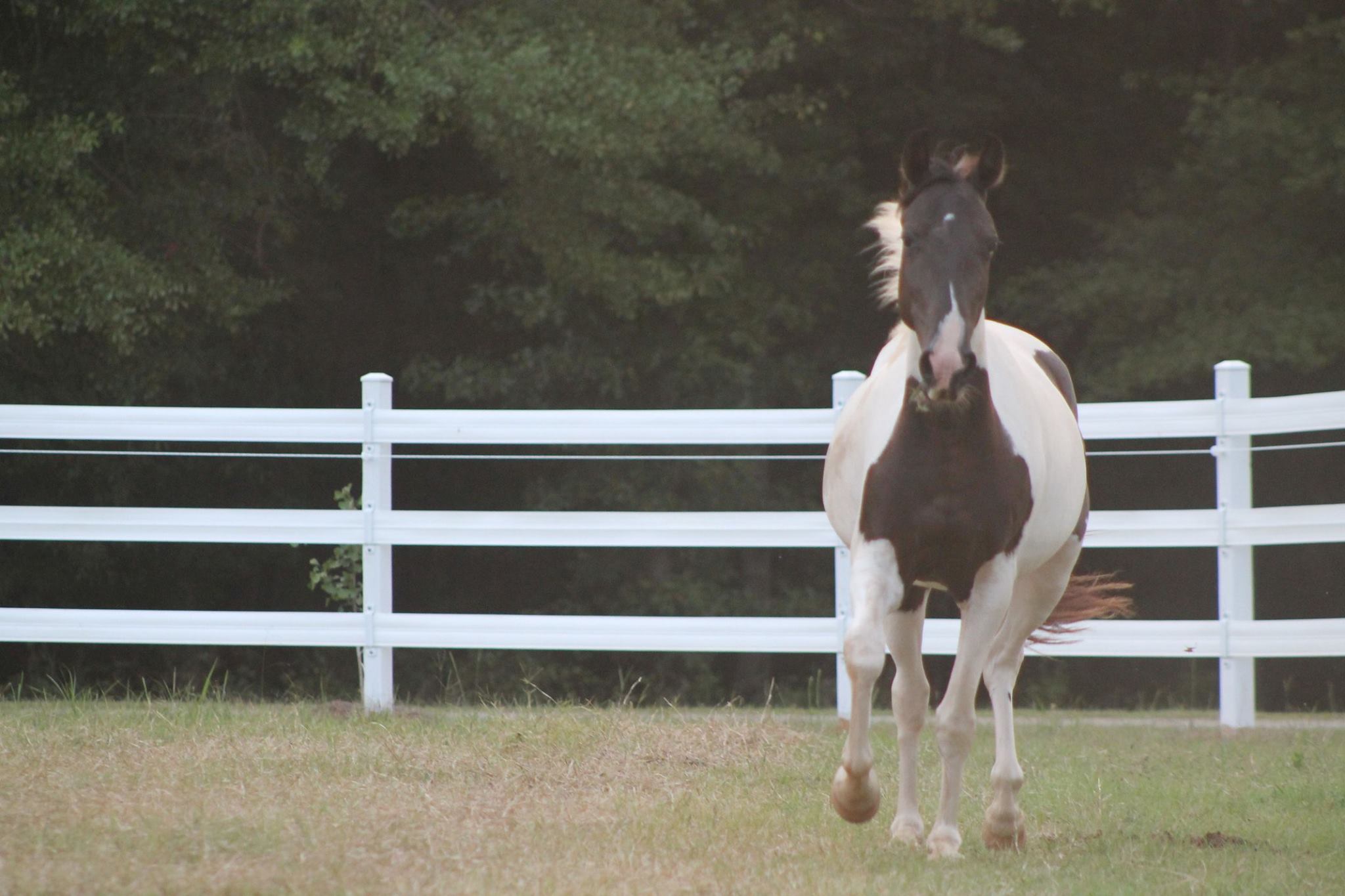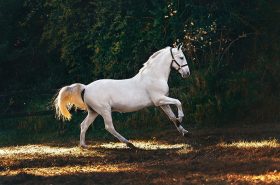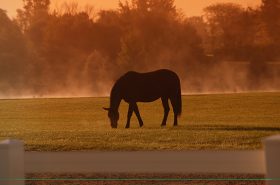
Congratulations! You’ve just bought a new horse. Whether it is your first, a second one to be a buddy to an “only” horse, or another to add to your ever-growing herd, be prepared to introduce him to his new home correctly. 
If you are bringing him home to join your existing herd, have a place prepared for him so he can be by himself the first week or so.
It is not advisable to just let him loose with the other horses right away. While horses are herd animals, they are not quick to let in a new member. By keeping the new guy separate, yet near enough so he can see, hear, and smell the others, your chances of a successful introduction increase.
If you don’t have a separate paddock area already, you can easily make one with electric fencing.
Tape, ElectroBraid and rope are easy to work with, as you can easily unroll the spool by putting it on a broom handle and walk it out. Without much time and effort, you can fence off a corner of an already existing area. A few T-posts can be sunk in a short amount of time to mount the fence on. Make these posts safer by putting a T-post sleeve or post cap on them.
Don’t skimp on your temporary fencing.
The fence still needs to do its job, which is to contain your animals. You want your temporary fence to be just as stout as your permanent electrical set-up. An electrical gate, made out of your fence material and gate handles, will work well with this set-up. You don’t need to install a heavy permanent gate for this situation.
Now that his area is ready, bring in your new horse on a lead rope.
The lead allows for more control. Lead him along the fence line so he learns his boundaries. Show him where you’ve set out some hay and water. Continue leading him all the way around. Don’t have the electric turned on just yet; if your horse was to nose the fence and get shocked, you would, too. The current would travel through the horse and lead rope and into you. Your horse will discover the electric soon enough. Don’t be surprised if your other horses start running back and forth, stomping and kicking, and start making noises you normally don’t hear them make. Before they are even put together, they are establishing their dominance. Don’t let your new horse become distracted as you lead him around. Maintain control. Release your horse only after he is calm and the electric is turned on. He may alternate between eating and running up to the common fence line to see the other horses. Striking out at each other through the fence is inevitable; by having the electric on, the horses most likely will stay back enough so that all they hit is air.
Remain with your horse long enough until you feel he is getting comfortable.
Once you leave the paddock, stay and watch just a little while longer. Give the older resident horses some hay to distract them. In a little while, everyone will settle down. They’ll soon be standing nose-to-nose on either side of the fence. Don’t let that fool you, though. They may do a “Jekyll and Hyde” transformation when they are eventually put together and there are no fences to separate them. We’ll discuss handling this situation later in the article. Your new horse has been fenced off in his own separate area for at least a week now and seems to be settling in. Your other horses aren’t paying him much attention anymore. They’re finally beginning to act like the herd animals they are supposed to be. They may be standing together and sniffing noses through the fence. Perhaps your new horse has been moved from an isolated stall and has been put in a stall next to the other horses. You may have even ridden him with the other horses, too. It’s just about time to admit the new horse to the herd. Be prepared for the horses to act differently once there are no fences between them. However, with a little preparation and planning, the introduction is ready to begin.
As you did when you first brought the new guy home, spread out some hay.
This will help keep everybody distracted. Bring the new horse in from a gate where he can be seen; you don’t want him coming in from behind and possibly spooking the other horses. By using the same entrance that you normally do, you are also introducing the new horse to your normal turnout routine. This will also help keep the herd from thinking that something different is going on. As always when working with horses, remember safety first. Don’t forget to turn off the electric while you are in the pen.
If the current members of the herd gather up by the gate, don’t go in until you’ve quietly chased them off.
Try not to get everybody excited. Just because a new horse is coming does not mean that the old guys can forget their manners. A helper to hold the horses at bay may come in handy.
Even if you normally turn out without halters, leave one on your new horse for the first day or two.
If you need to catch him in a hurry, it will be a big help. Make sure the halter is leather or a breakaway style to help prevent injuries.
With a lead rope, lead the new horse all the way inside.
Using a lead rope is safer than just holding the halter, as the lead rope will give more leverage. Make sure the gate is shut behind you so no one can escape. Have the electric turned back on. Turn your horse around to face the gate and release him. The horses may ignore each other for the most part, or they may squeal and paw at each other. That shouldn’t last too long. Even though fence lines have separated them, the pecking order has been established. Now, without the fence lines, it’s being reasserted. If, however, things don’t calm down after a few minutes, or the acts of aggression escalate, the horses may not be ready to be put together.
Separate the new horse and try again in a few days.
If the horses are still not getting along after a couple more attempts to unite them, a permanent separate turnout area may be necessary. In the wild, horses had many acres to run to get away from aggressors in the herd; in our backyards they do not. In the wild, the aggressor will not have a fence or building to run the new horse into; in our backyards, he will. Whatever happens, it is our job to make the new horse’s transition to his new property and herd as easy as possible. Proper horse management is learning who gets along with whom and which horses can be turned out together. The risk of injury is lowered for all, and soon your new horse will be part of the family.



